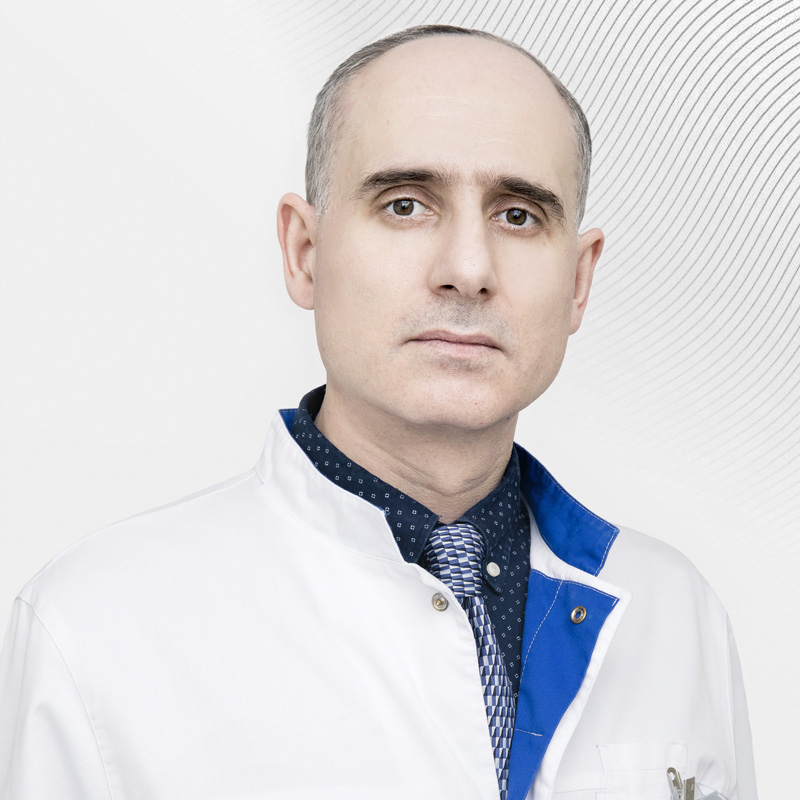Removal of formation in the liver
Causes of liver cyst formation
It has not yet been possible to determine exactly why liver cysts occur. Some formations have been present since birth, and may increase over time. Others are formed throughout life. Due to the causes of liver neoplasms, they are divided into infectious or non-infectious.
- Non-infectious liver cysts are more often formed during the period of intrauterine development. The prevailing theory associates their occurrence with aberrant bile ducts, blind cavities that are not integrated into the general bile duct system during development. Over time, epithelial secretions accumulate in these cavities and a cyst filled with fluid forms. As a rule, a liver cyst does not show symptoms until it is 45 or 50 years old. Approximately 80% of cases occur in women.
- Infectious liver cysts occur due to parasitic damage, usually by tapeworms, echinococcus or alveococcus. The larvae of the parasite multiply in the liver tissue, causing the formation of cavities. In Russia, echinococcosis and alveococcosis are relatively rare: approximately 500 cases are diagnosed annually. At the same time, population migration from endemic areas contributes to an increase in the incidence of this pathology in large cities.
Cysts can also occur due to traumatic liver injury and the formation of hematomas, which causes fluid-filled cavities (false cyst) to form in fibrotic tissues. Other traumatic factors can also affect the development of false liver cysts: treatment of liver abscess, surgery to remove an echinococcal cyst (residual cavity), Unlike true cysts, the walls of false cysts are formed by connective tissue, and not;epithelium.
Liver cysts: types
Liver cysts come in several types
Simple singles
These are benign growths that often become an accidental finding during routine examination or ultrasound examination for other complaints. A cyst can form in any part of the liver. The size of the neoplasm is usually small (1-5 cm), however, in some patients, cysts reach enormous sizes up to 25 cm. Simple cysts are rarely complicated and do not always require treatment.
Biliary cystadenoma
It is a slow-growing neoplasm that also arises from the bile ducts. Most researchers believe that cystadenomas are formed due to fetal malformations or as a response of liver tissues to an acquired inflammatory process.
A cystadenoma is a multi-chambered cyst that consists of several cavities with internal septa. Such a liver cyst can range in size from 1.5 to 15 cm, and in some cases its weight reaches 6 kg.
Mucinous and serous adenomas are distinguished. Mucinous adenomas account for 95% of all identified neoplasms.
Unlike a simple cyst, cystadenoma can be complicated. Possible complications include bleeding from the cyst wall, suppuration or infection, and mechanical jaundice. With a prolonged course, cystadenoma can become malignant, that is, it can degenerate into a malignant, rapidly growing tumor, cystadenocarcinoma. According to some studies, the risk of malignancy is more than 30%. Therefore, cystadenoma is considered as a precancerous disease. If such a formation is detected, an operation to remove it is indicated.
Polycystic liver disease
Cystic liver disease is considered a hereditary disease. Cysts can be located in one lobe of the liver or affect both lobes of the organ. Their size ranges from a pinhead to 10-centimeter formations. In some cases, the bridges separating the cysts break through, which leads to the union of cavities. In this case, the volume of the cyst can reach 1 liter. Depending on the number and size of cysts, they can significantly increase the volume of the liver and deform its surface.
The development of this pathology is associated with mutations in the RKCSH or SEC63 genes, and is usually accompanied by polycystic kidney disease. This mutation prevents the cavities forming in the fetus from merging into the bile ducts. With age, the number of cysts may increase. Most researchers associate the development of cysts with exposure to estrogens, as the formation of tumors accelerates during pregnancy and when taking hormonal drugs.
There may be a complicated course of pathology with hemorrhages, suppuration or cyst rupture. With rapid progression and complicated course of the disease, radical surgery may be required, including liver resection.
Symptoms
In most cases, patients do not have any complaints. Liver functions usually do not suffer, since damage to hepatocytes does not occur in benign neoplasms. Symptoms are more likely to appear if the cysts reach large sizes (more than 10-20cm). In this case, the following complaints are possible:
-
dull pain in the right hypochondrium;
-
decreased appetite, early feeling of fullness after small meals;
-
nausea or vomiting;
-
symptoms of dyspepsia (flatulence, rumbling in the stomach, stool disorders);
-
dyspnea.
Mechanical jaundice or ascites may occur when the bile ducts are compressed. Fluid accumulates in the abdominal cavity. In some cases, large neoplasms can be palpated through the abdominal wall.
Treatment methods
For simple non-infectious liver cysts of small size (up to 5 cm), modern medicine recommends surveillance tactics. The patient is shown regular consultations with a hepatologist and ultrasound with an interval of 3-12 months. If, according to the examination results, the cyst is stable and there are no symptoms, surgery is not required. In some cases, such neoplasms spontaneously regress.
Simple cysts of large size, which are accompanied by symptoms and a decrease in the patient's quality of life, are treated with minimally invasive methods. These include:
- Puncture aspiration. Such an operation does not require incisions. Under ultrasound control, a long thin needle is inserted through the abdominal wall, through which the contents of the cyst are aspirated. After that, a sclerosing agent (a solution of ethyl alcohol) is injected into the cavity, which destroys the cyst capsule cells, preventing the re-accumulation of fluid. If the formation is large, a tube can be installed to drain the contents, which is removed after 1-2 weeks.
- Laparoscopic operations. These are minimally invasive surgical procedures with a low level of injury to healthy tissues and rapid rehabilitation. During laparoscopic operations, several punctures are performed in the abdominal wall. A probe with a video camera is inserted through one of them, which allows the surgeon to monitor the manipulations. Microsurgical instruments are inserted through other punctures. Gas is injected into the patient's abdominal cavity to expand the surgeon's field of work. Operations are usually performed by fenestration. In this case, the surgeon opens the upper part of the cyst, removes the contents and de-epithelializes the cyst capsule. Such an intervention is indicated if the formation is located in easily accessible segments of the liver. The method is also applicable for polycystic kidney disease.
For large formations or complicated pathology, open-access surgery is indicated. Anatomical resection of the liver.
With cystadenomas, there is a risk of the spread of pathological cells to healthy tissues, therefore laparoscopic peeling surgery or abdominal resection is indicated. In case of parasitic infections, surgical treatment is also carried out in an open way. Antiparasitic treatment is performed, removal of all elements, suturing of fistulas or resection in the ducts.
How the operation works
Liver resection is a large and complex intervention that is prescribed only after a thorough comprehensive examination of the patient and a risk assessment. Before the operation, instrumental examinations are performed to accurately determine the location of the formation, and detailed blood tests are performed to establish possible contraindications.
The operation is performed under general anesthesia and can last several hours. The surgeon performs an incision along the abdominal wall or under the ribs, ligates the blood vessels and blocks the bile ducts. Next, one or more affected liver segments are removed.
Within 7-14 days after liver resection, the patient undergoes rehabilitation in a hospital, after which he is discharged home. A special feature of liver tissues is their ability to fully regenerate and restore function. Depending on the volume of excised tissue, rehabilitation can take up to one month. The patient will be able to return to his usual lifestyle after 6 to 8 weeks.
At the EMC Clinic, operations are performed by highly qualified surgeons using state-of-the-art equipment. The clinic is headed by a leading Russian hepatopancreatobiliary surgeon, Professor Alexey Vladimirovich Zhao. Make an appointment with your doctor by phone +7 495 933-66-55.
Doctors
.jpg)



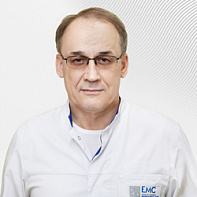
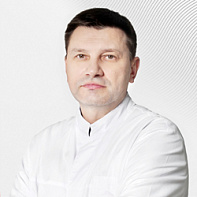

.jpg)
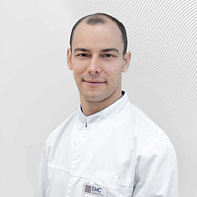

.jpg)

.jpg)

.jpg)


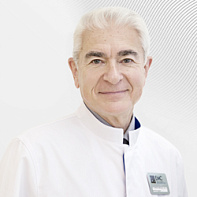

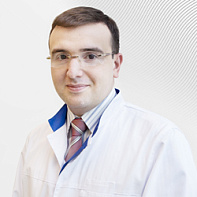
- He is one of the leading surgeons of the EMC. During the absence of the head of the EMC Surgery Center, he acts as the head
- The main specialization is abdominal "planned" and "urgent" surgery
- Member of the Russian Society of Surgeons named after N.I. Pirogov
- Member of the Russian Society of Surgeons named...
